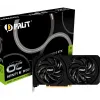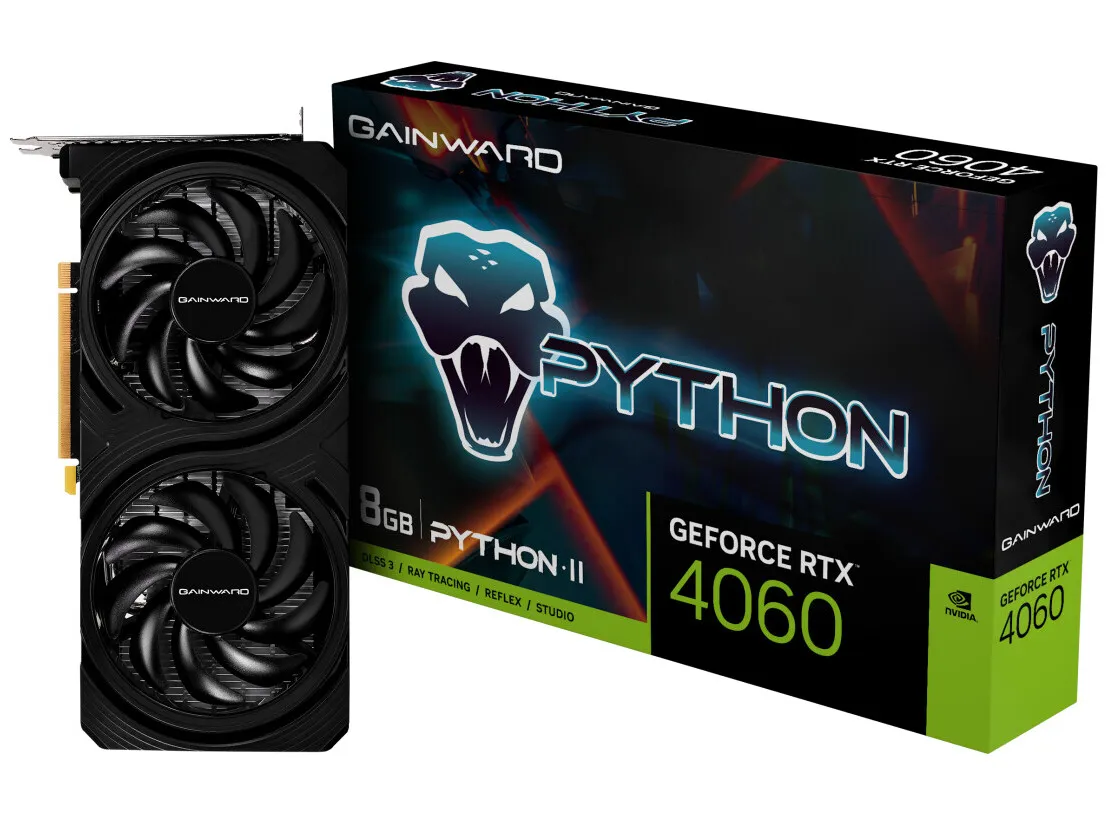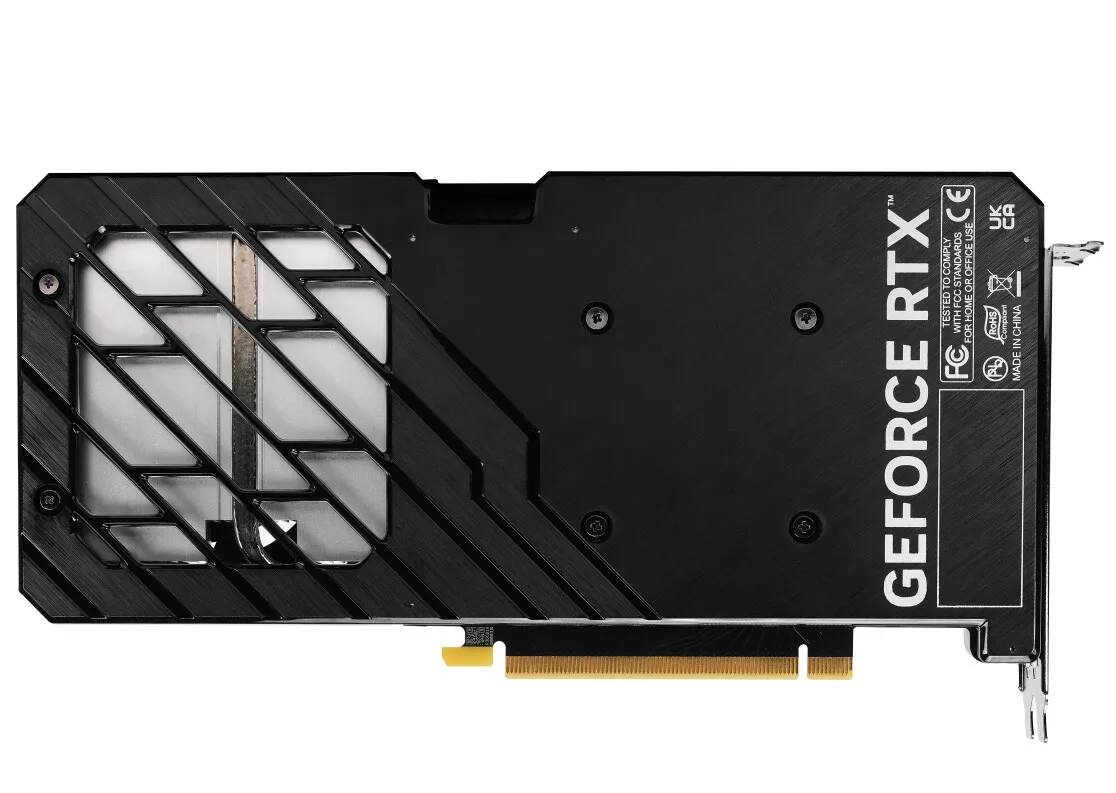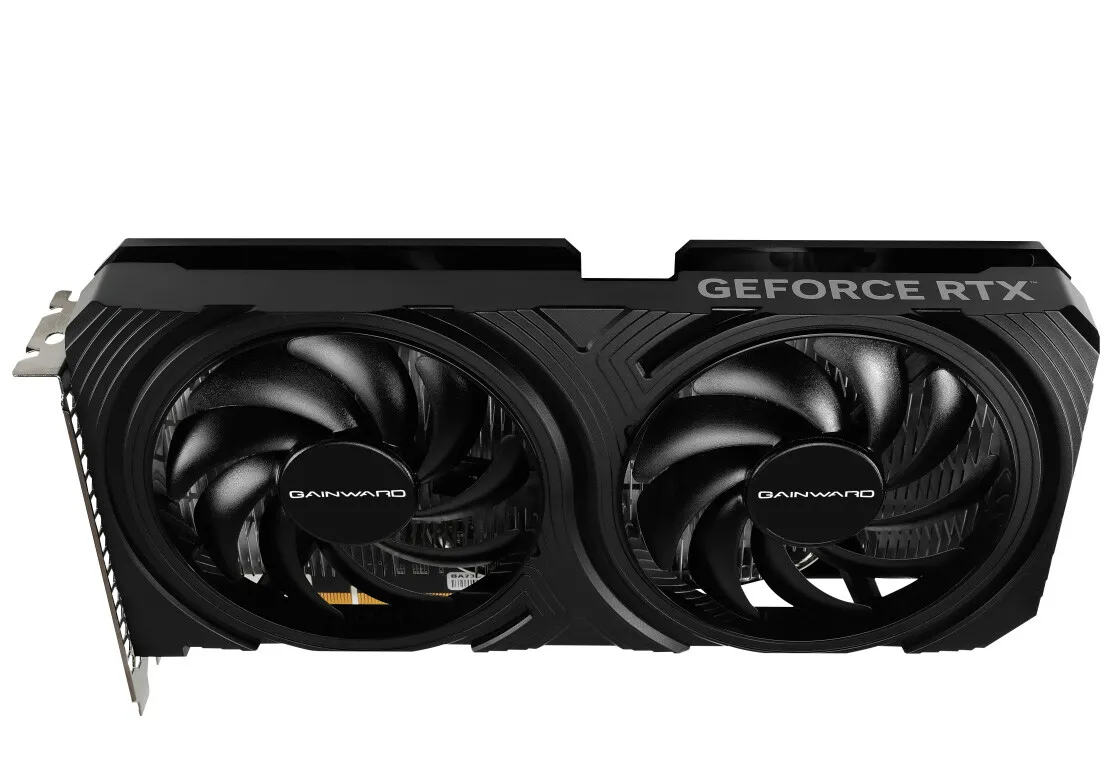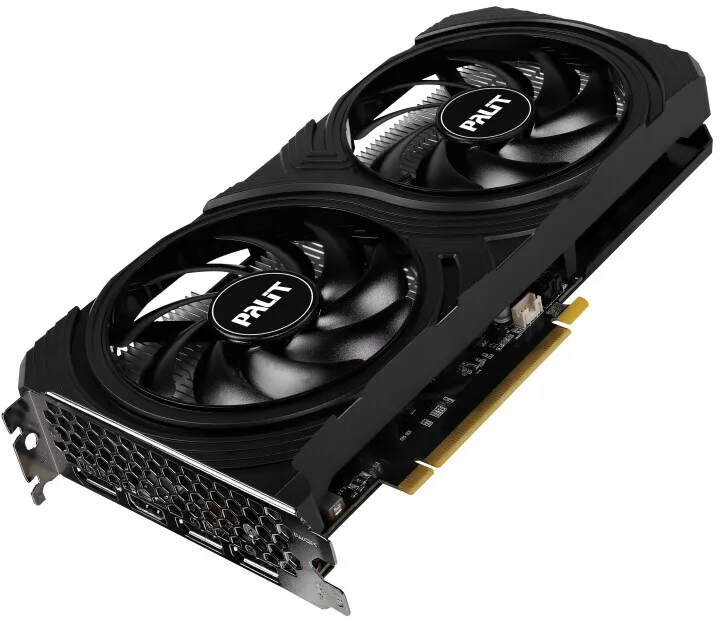The primary distinction between the new and previous models lies in the cooling technology. Both the Infinity 2 and Python 2 models are equipped with dual 92 mm fans capable of halting operation under light load conditions to minimize acoustic output, a feature also present in the earlier DUAL V1 and Ghost V1 models. However, unlike their predecessors, which incorporated RGB LED lighting and aluminum fin-stack heatsinks, the latest offerings lack RGB lighting and adopt a simpler cooling solution. This solution consists of an extruded aluminum heatsink integrated with a copper heatpipe designed to efficiently dissipate heat from the core components. The cooler covers of the new models are notably adorned with an S-shaped pattern around the fan regions, intended to symbolize an infinity sign on the Palit variant and a python on the Gainward variant.
From a performance standpoint, the Infinity 2 and Python 2 adhere to NVIDIA's standard specifications for the RTX 4060, including a 2460 MHz boost clock and a 17 Gbps memory speed. As for pricing, it is anticipated that both Palit and Gainward will position these new models around the prevailing market rates for RTX 4060 cards, which have recently seen a reduction to approximately $250 in certain regions. This pricing strategy positions the Infinity 2 and Python 2 as cost-effective options for individuals seeking to enhance their graphical performance capabilities.
Source: VideoCardz
